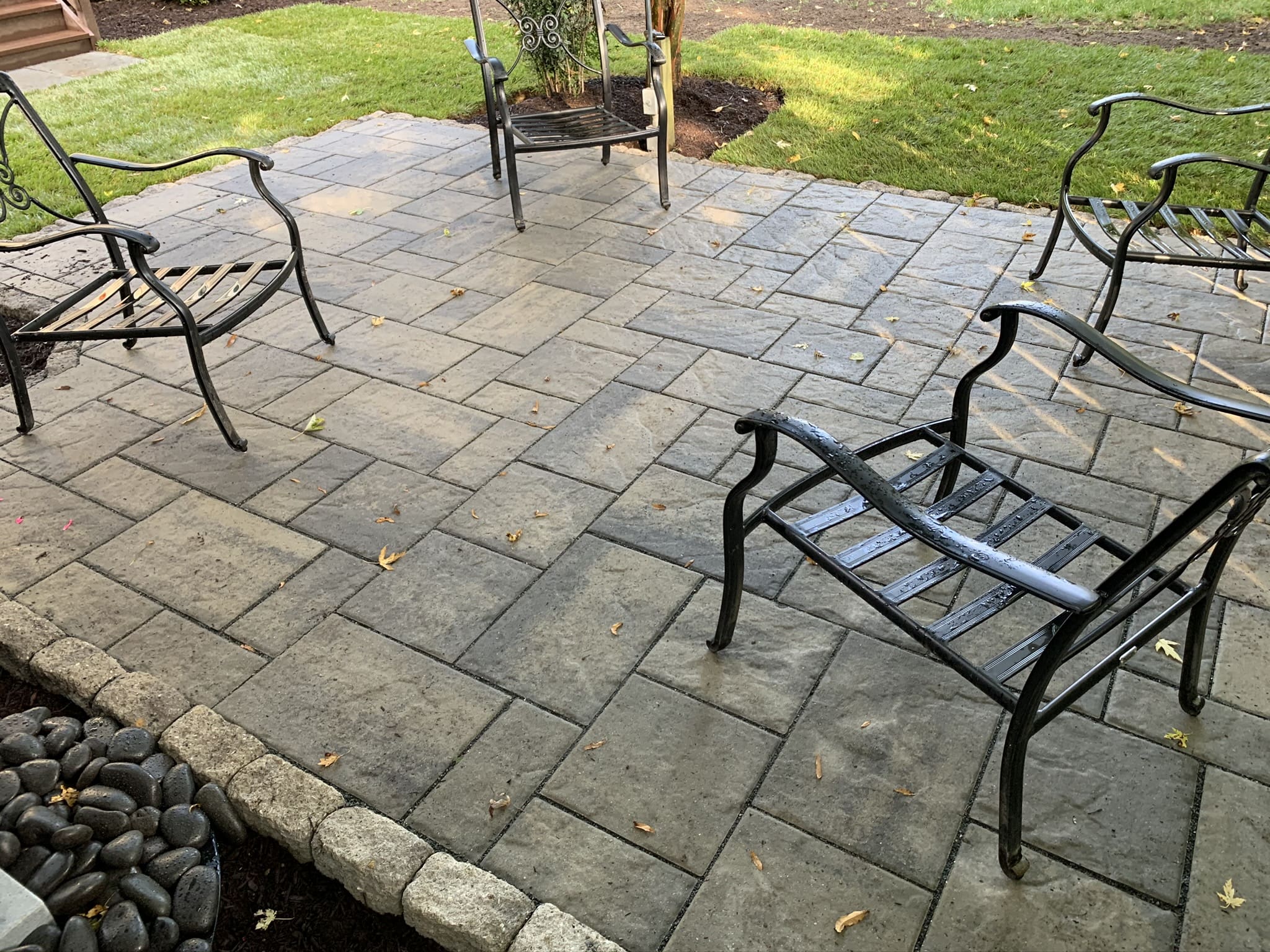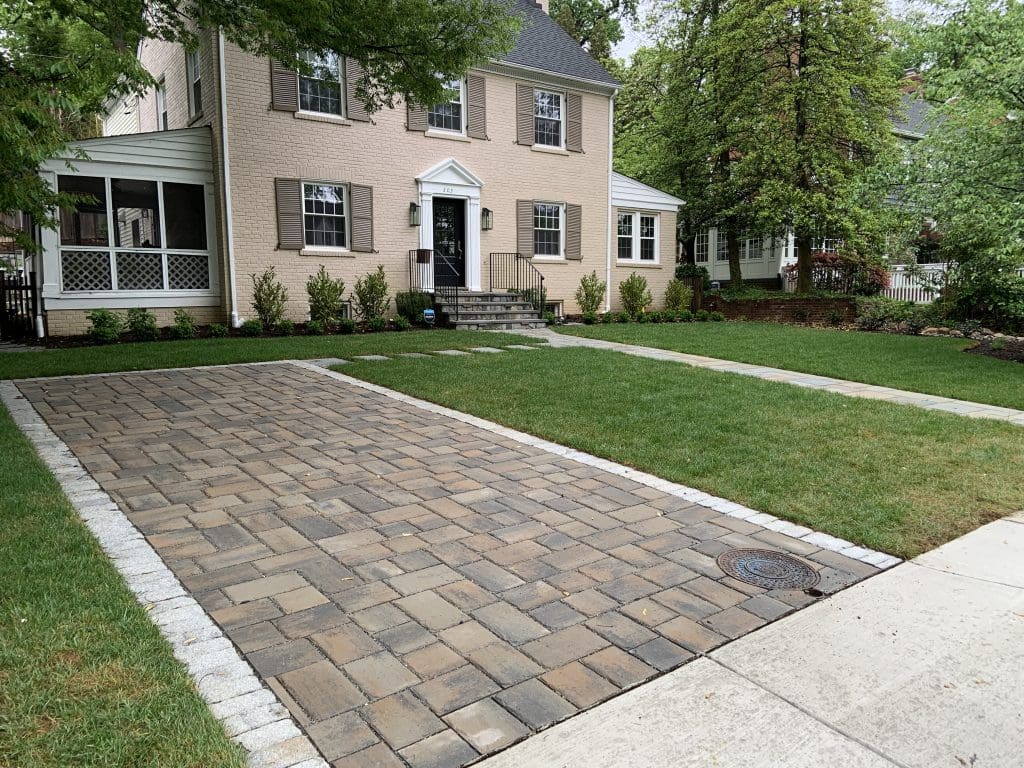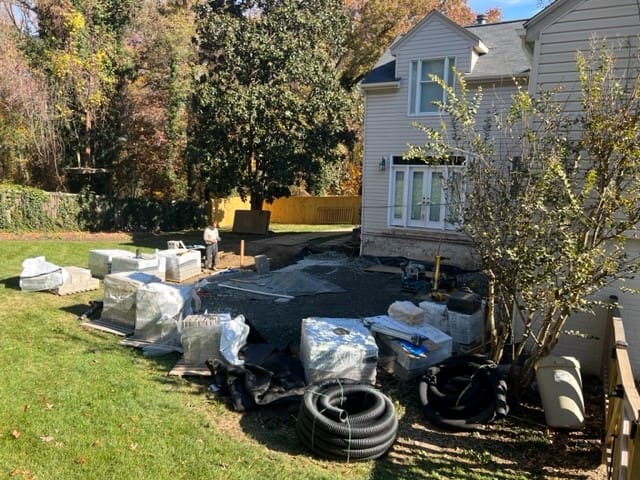
Permeable pavers have been installed in the U.S. since the 1960s, but they’ve recently been increasing in popularity as topics like stormwater management become more widely known to the public.
If you are considering adding permeable pavers as an offering in your hardscaping repertoire, check out where this solution shines and where it shouldn’t be used.
Driving Demand
While permeable pavers are increasing in popularity, it hasn’t been driven by consumer requests but rather by county and municipality rules reducing the amount of impermeable area per lot.

Alan Macbeth, senior landscape designer for Kingstowne Lawn & Landscape, based in Alexandria, Virginia, says when homeowners have already met their maximum, permeable pavers provide a solid surface option.
Chris Strempek, president of Complete Landsculpture, based in Dallas, Texas, agrees they tend to recommend permeable pavers when there are regulations they have to meet or green codes.
“We will also see them specified on occasion on plans that we are bidding from our landscape architects,” Strempek says.
Benefits of Permeable Pavers
Permeable pavers reduce stormwater runoff and alleviate the pressure on sewer infrastructure. The pavers help keep water on the site without the need for a retention pond.
By controlling runoff, this solution reduces erosion and flooding risks. Amanda Hamilton, a landscape designer for Kingstowne, adds that it also helps keep pollutants out of streams and rivers.
Strempek says another benefit of permeable pavers is allows clients the flexibility to increase their lot coverage. They are able to provide customers with the desired hardscaping features while maximizing their space.
Drawbacks of Permeable Pavers
The main drawback to permeable pavers for clients is their cost. Strempek estimates permeable pavers are about 30% more expensive than non-permeable options, depending on the paver.
“This is due to typically deeper excavations (i.e. more time and disposal fees) and more gravel deliveries due to the various sized stones in the layers of the base build up,” Macbeth says. “Add to that the consideration for sub-grade drainage in many installs. If the project is in a tougher location to access, this can really drive up costs, but most of our permeable installs have been driveways, which, with easy access to the street, can really reduce the install cost difference between permeable and a traditional impermeable install.”
Another con to permeable pavers is the maintenance they require.
“You have to keep debris free (leaves, soil etc) from sitting on or settling between the paver joints as that will clog up the drainage system,” Hamilton says. “Prior to install and during the design process, it is best to try and alleviate sources of organic matter from reaching the hardscapes.”
Hamilton notes that if landscape beds are adjacent to the permeable paver install, ensure there is a proper slope away from the pavers or use some form of edging to keep mulch and soil from washing out onto the surface.
Keys to Success
While permeable pavers are a good solution in many cases, it’s important to know where they are not suitable as well. They shouldn’t be installed on steep slopes as the water flow in heavy events can wash out the gravel medium between the pavers.

Macbeth says they’re not suggested for areas that need to be plowed or sites with heavy deciduous tree overstory as debris can clog the joints over time. Installing permeable pavers near sloped or unretained areas can also lead to organic debris being deposited onto the paver surface.
Hamilton notes you need to educate customers on the benefits and the maintenance that permeable pavers call for.
“Permeable paver installs are essentially a filter and like any other filter they only perform as well as the rate at which they ‘flow’ or breathe,” she says.
Strempek says when they started installing permeable pavers, they learned about the extra time required to excavate to the proper depth of the substrata required to meet the specifications for proper drainage. He encourages understanding the specifications when bidding permeable pavers and properly installing them so they drain properly.
“As with any surface install, whether permeable or not, water management is key,” Macbeth says. “In the case of permeable pavers, more thought is needed with regard to sub-grade water management.”
Strempek recommends adding permeable pavers to your materials pallet as they become more mainstream.
“Take advantage of all the important information and specific training out there through PICP and manufacturers as to best practice for installs so you’re well informed to perform the installs and your customers,” Hamilton says. “As weather conditions and city/county rules change, being able to confidently offer this as a service is invaluable.”




